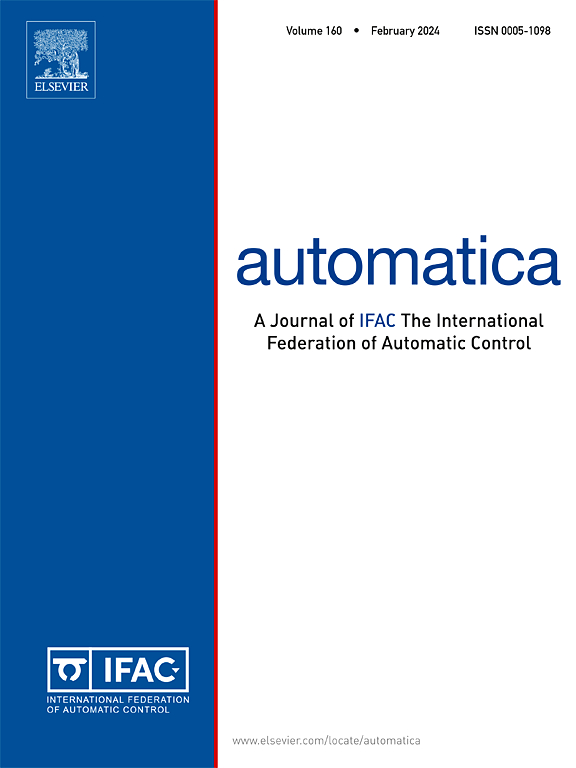用于跟踪最大(最小)参考信号的有限时间分布式动态共识协议
IF 5.9
2区 计算机科学
Q1 AUTOMATION & CONTROL SYSTEMS
引用次数: 0
摘要
跟踪一组信号的最大值或最小值是涉及协调多智能体系统的多种应用的基本任务。本文研究了网络多智能体系统中的动态最大或最小共识问题。在该框架中,每个智能体都可以访问一个局部外生信号,目标是确保所有智能体仅依靠局部信息跟踪外生信号的时变最大(最小)信号。我们提出了一种新的分布式协议,在无向交换网络拓扑结构下,在有限时间内实现了这一目标。我们研究中的假设仅涉及网络拓扑的连通性和外生信号导数界的知识。正弦信号和分段线性信号的数值结果证实了理论结果。本文章由计算机程序翻译,如有差异,请以英文原文为准。
A finite-time distributed dynamic consensus protocol for tracking maximum (minimum) reference signals
Tracking the maximum or minimum of a set of signals is a fundamental task in multiple applications involving coordinated multi-agent systems. This work tackles the dynamic maximum or minimum consensus problem in networked multi-agent systems. Within this framework, every agent has access to a local exogenous signal, and the objective is to ensure that all agents track the time-varying maximum (minimum) signal of the exogenous signals by only relying on local information. We present a novel distributed protocol achieving this objective in finite time under undirected switching network topologies. The assumptions in our study pertain solely to the connectivity of the network topologies and the knowledge of the bounds on the derivatives of the exogenous signals. Numerical results with sinusoidal and piecewise linear signals corroborate the theoretical findings.
求助全文
通过发布文献求助,成功后即可免费获取论文全文。
去求助
来源期刊

Automatica
工程技术-工程:电子与电气
CiteScore
10.70
自引率
7.80%
发文量
617
审稿时长
5 months
期刊介绍:
Automatica is a leading archival publication in the field of systems and control. The field encompasses today a broad set of areas and topics, and is thriving not only within itself but also in terms of its impact on other fields, such as communications, computers, biology, energy and economics. Since its inception in 1963, Automatica has kept abreast with the evolution of the field over the years, and has emerged as a leading publication driving the trends in the field.
After being founded in 1963, Automatica became a journal of the International Federation of Automatic Control (IFAC) in 1969. It features a characteristic blend of theoretical and applied papers of archival, lasting value, reporting cutting edge research results by authors across the globe. It features articles in distinct categories, including regular, brief and survey papers, technical communiqués, correspondence items, as well as reviews on published books of interest to the readership. It occasionally publishes special issues on emerging new topics or established mature topics of interest to a broad audience.
Automatica solicits original high-quality contributions in all the categories listed above, and in all areas of systems and control interpreted in a broad sense and evolving constantly. They may be submitted directly to a subject editor or to the Editor-in-Chief if not sure about the subject area. Editorial procedures in place assure careful, fair, and prompt handling of all submitted articles. Accepted papers appear in the journal in the shortest time feasible given production time constraints.
 求助内容:
求助内容: 应助结果提醒方式:
应助结果提醒方式:


